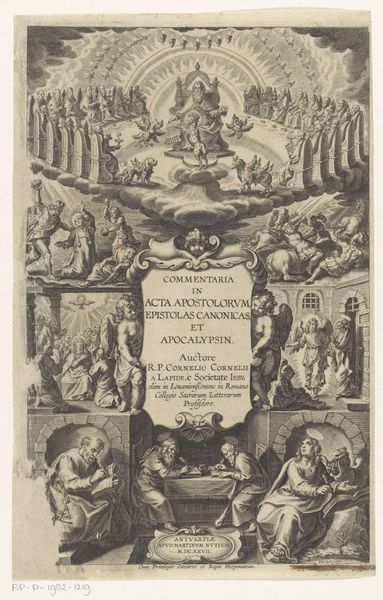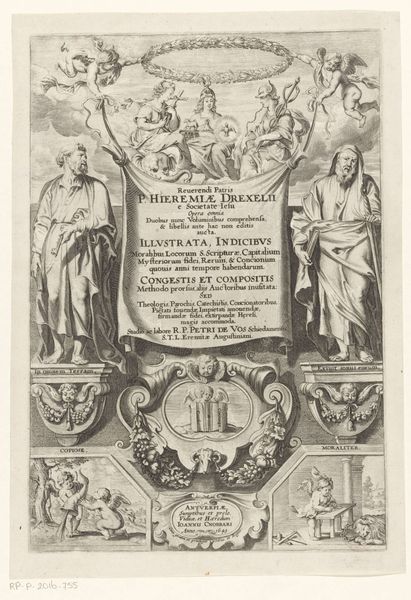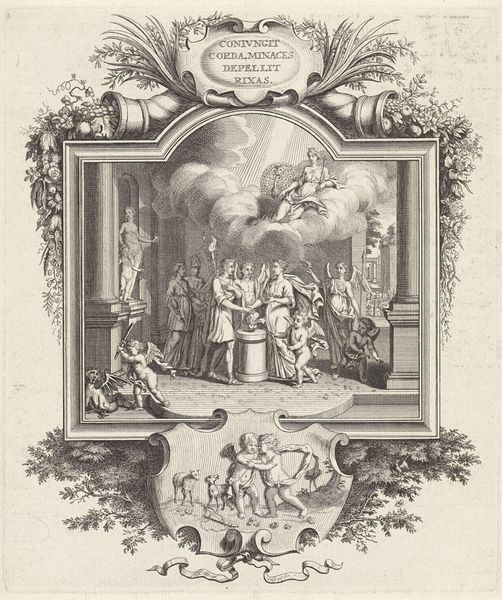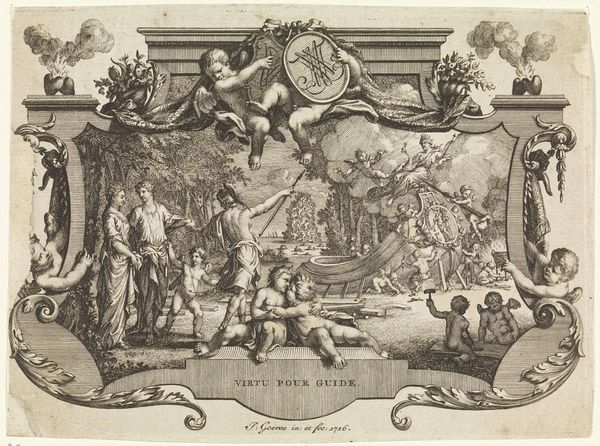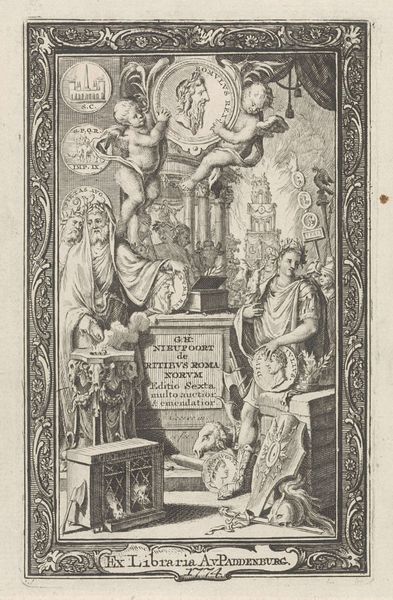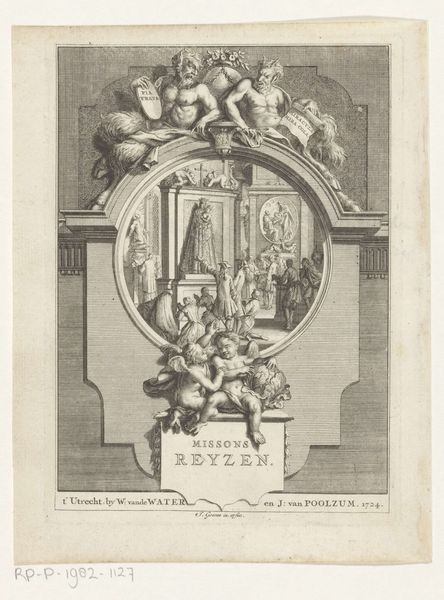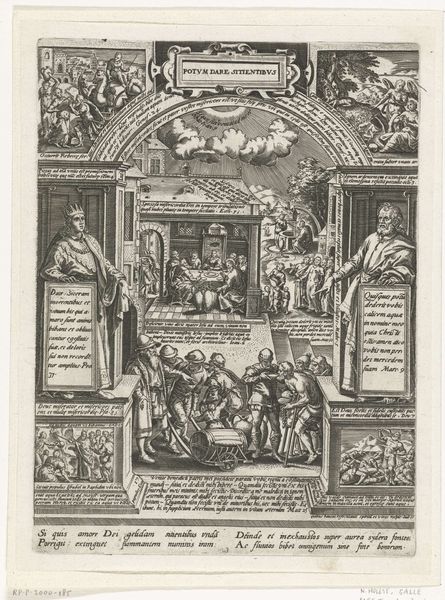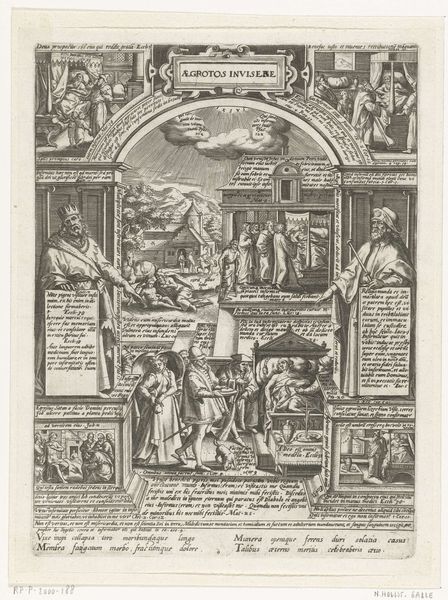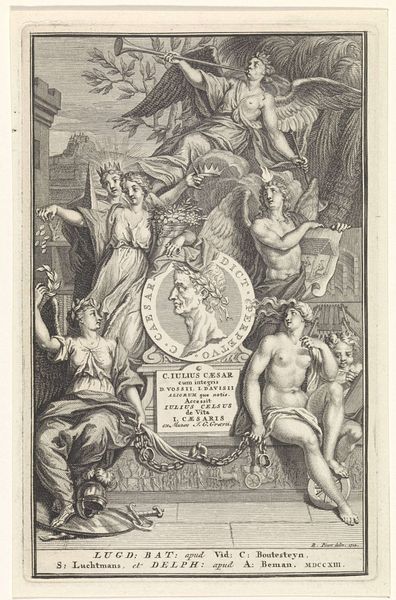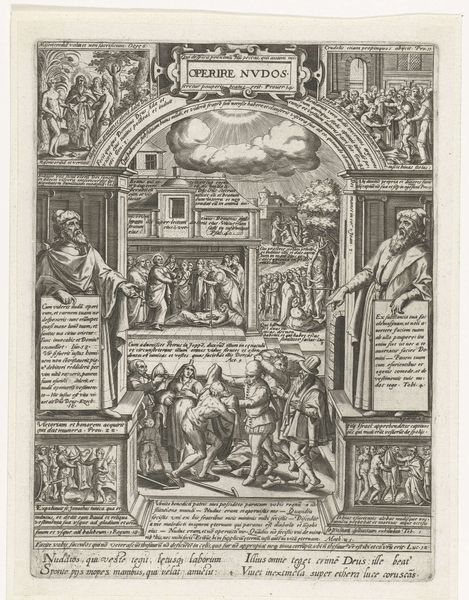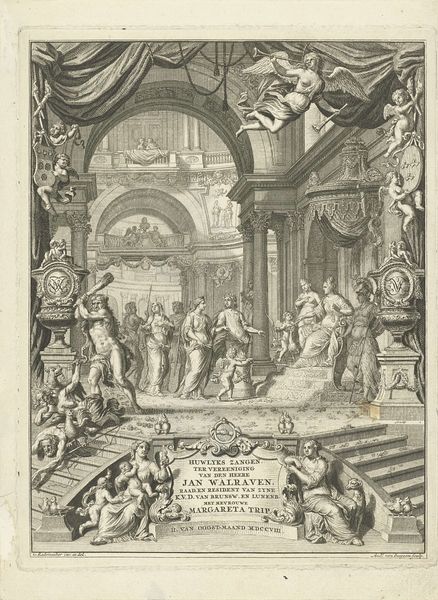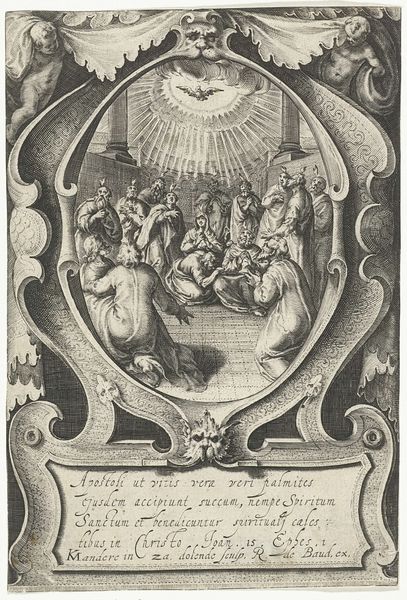
Allegorie op het huwelijk van Willem V en Wilhelmina van Pruisen, 1767 1767
0:00
0:00
danielnikolauschodowiecki
Rijksmuseum
print, engraving
#
portrait
#
neoclacissism
#
allegory
# print
#
old engraving style
#
history-painting
#
engraving
Dimensions: height 350 mm, width 237 mm
Copyright: Rijks Museum: Open Domain
Curator: What grabs me immediately is this dreamy, almost celestial quality. It feels like a grand, symbolic performance. The airiness, despite the precise lines... it’s quite something. Editor: Indeed. We are looking at "Allegory on the Marriage of William V and Wilhelmina of Prussia, 1767," a print made by Daniel Nikolaus Chodowiecki to commemorate the union. This event was obviously of great socio-political importance. Curator: Oh, an allegory! That explains the lineup of, well, deities, I suppose, flanking the happy couple at the altar. And those chubby cherubs floating above, fiddling with... are those laurel wreaths? A promise of future glory, perhaps? Editor: Precisely. Allegorical imagery was often employed in Neoclassical art to elevate and idealize individuals or events, grounding them within larger historical or moral frameworks. Consider the calculated distribution of figures, the restrained emotions. It’s a carefully constructed image of power. Curator: Constructed is a good word. I find myself wishing for a touch of genuine warmth amidst all this symbolic grandeur. Still, the level of detail in the engraving is remarkable! Every fold in the drapery, every strand of hair. Editor: That’s typical of Chodowiecki’s skill as a printmaker. The format itself—prints circulated widely and were vital in disseminating political and social messages across Europe. This image would have reached a broad audience, shaping perceptions of the marriage and the ruling families. Curator: Makes you wonder what spin doctors of today would make of it. I guess there is no much of a difference if the artwork pretends to show how everything should be to please people. Editor: It’s an exercise in controlled image-making. And even after hundreds of years we are here to appreciate that, and keep interpreting the image with new eyes. Curator: It seems like we still have some use to learn from them, in terms of public perception. Thank you!
Comments
No comments
Be the first to comment and join the conversation on the ultimate creative platform.
